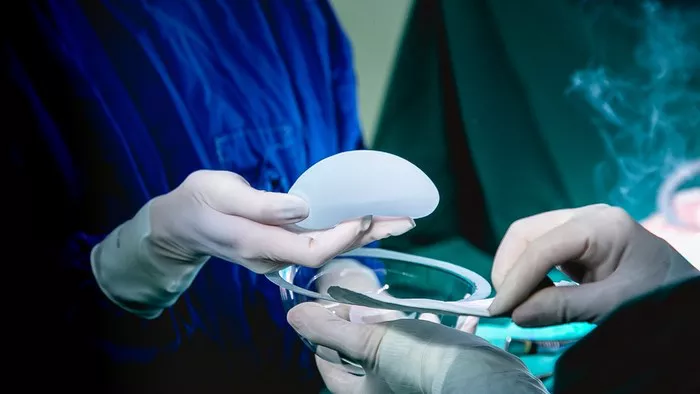Breast implants have been a popular choice for women seeking to enhance their appearance. However, one complication that can arise is the hardening of breast implants. This condition can be distressing for patients, leading to discomfort and changes in the aesthetic outcome. In this article, we will explore eight reasons why breast implants can get hard, delving into the underlying causes, symptoms, and potential treatments.
1. Capsular Contracture
Definition and Causes
Capsular contracture is the most common reason for breast implants becoming hard. This condition occurs when the scar tissue that naturally forms around the implant tightens and hardens.
Symptoms
Firmness of the breast
Distorted shape
Pain or discomfort
Contributing Factors
Infection: Even a low-grade infection can cause inflammation and lead to capsular contracture.
Hematoma: Accumulation of blood around the implant can trigger an inflammatory response.
Seroma: Fluid build-up around the implant may also contribute to this condition.
Treatment Options
Non-Surgical: Medications such as leukotriene inhibitors.
Surgical: Capsulectomy, where the scar tissue is removed or the implant is replaced.
See Also: 5 Side Effects Of Autologous Fat Breast Enlargement
2. Implant Rupture
Definition and Causes
Implant rupture involves the breaking or leaking of the implant shell, which can lead to hardening due to the body’s reaction to the leaking material.
Symptoms
Changes in breast shape
Pain or tenderness
Hardening of the breast tissue
Types of Rupture
Silent Rupture: Often goes unnoticed, particularly with silicone implants.
Symptomatic Rupture: Presents with clear symptoms and is more common with saline implants.
Diagnosis and Treatment
Imaging: MRI or ultrasound to confirm rupture.
Surgery: Removal and replacement of the ruptured implant.
3. Calcium Deposits
Definition and Causes
Calcium deposits can form around the implant, contributing to a hardening effect. This condition is often associated with long-term implants.
Symptoms
Hard lumps around the implant
Discomfort or pain
Visible changes in breast shape
Risk Factors
Duration: Longer duration of having implants increases risk.
Inflammation: Chronic inflammation can lead to calcification.
Management
Monitoring: Regular check-ups to monitor the extent of calcification.
Surgical: Removal of calcified areas if symptomatic.
4. Infection
Definition and Causes
Infection around the breast implant can lead to inflammation and hardening. This can occur shortly after surgery or even years later.
Symptoms
Redness and swelling
Fever
Pain and tenderness
Sources of Infection
Surgical Contamination: Bacteria introduced during surgery.
Hematogenous Spread: Infection spreading from another part of the body.
Treatment
Antibiotics: To treat the infection.
Surgery: In severe cases, removal of the implant may be necessary.
5. Poor Surgical Technique
Definition and Causes
Improper surgical technique can lead to complications that result in hardening of the breast implants.
Symptoms
Asymmetry
Unnatural firmness
Pain and discomfort
Contributing Factors
Improper Placement: Incorrect positioning of the implant.
Insufficient Pocket Creation: Not creating enough space for the implant can cause compression.
Correction
Revision Surgery: To correct placement and improve outcomes.
Surgeon Selection: Choosing an experienced and qualified surgeon to minimize risks.
6. Suboptimal Implant Type
Definition and Causes
The type of implant used can influence the likelihood of hardening. Certain implants have higher risks of complications.
Symptoms
Changes in texture
Firmness
Pain
Types of Implants
Smooth vs. Textured: Textured implants are sometimes associated with a higher risk of complications.
Silicone vs. Saline: Different reactions to rupture and leakage.
Considerations
Consultation: Discussing with a surgeon the best type of implant for individual cases.
Monitoring: Regular check-ups to detect early signs of complications.
7. Autoimmune Response
Definition and Causes
An autoimmune response occurs when the body’s immune system attacks the implant, leading to inflammation and hardening.
Symptoms
Systemic symptoms like fatigue
Localized pain and firmness
Changes in breast appearance
Associated Conditions
Autoimmune Diseases: Patients with pre-existing conditions may be at higher risk.
Chronic Inflammation: Persistent immune response can lead to hardening.
Management
Medical Therapy: Immunosuppressive drugs to control the response.
Surgical Intervention: Removal of the implant in severe cases.
8. Aging of Implants
Definition and Causes
Over time, breast implants can degrade, leading to changes in texture and hardness.
Symptoms
Gradual hardening
Changes in breast shape and feel
Discomfort
Factors Contributing to Aging
Material Breakdown: Silicone or saline implants can deteriorate over time.
Body Changes: Natural aging process affecting surrounding tissues.
Recommendations
Regular Monitoring: Regular check-ups to assess the condition of the implants.
Replacement: Considering replacement of implants every 10-15 years to reduce risks.
Conclusion
Understanding the reasons behind the hardening of breast implants is crucial for both patients and surgeons. While complications can be distressing, many of them can be managed effectively with timely intervention and proper care. Regular monitoring and choosing an experienced surgeon can significantly reduce the risk of hardening and ensure a satisfactory outcome for breast augmentation procedures. If you experience any symptoms of hardening, consult with your plastic surgeon promptly to address the issue and explore appropriate treatment options.
Related topics:

